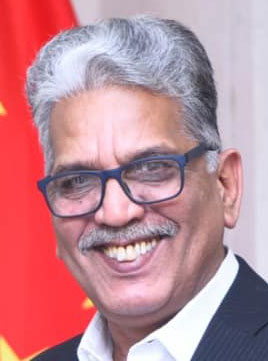South Asia is the least developed and poor region globally because of varying factors contributing to the prevalent underdevelopment and poverty. Among all, the dispute between India and Pakistan over Jammu and Kashmir is the most pertinent and contributes immensely. The state was ruled by Hindu Maharaja Harri Singh when Pakistan and India succeeded in getting independence from the British imperial occupation in August 1947. The accession question of Princely states was agreed in the partition plan of June 6, which offered freedom to the rulers to accede to newly established dominion based on geographic, religious, cultural, and economic contiguity.
The partition formula provided an opportunity for Kashmir to Join Pakistan because most of the prerequisites for accession were in favor of Pakistan. Nonetheless, Maharaja tried to suppress the Indigenous movement for accession through brutal force, consequently inviting armed rebellion against his troops. Initially, he tried to neutralize the lawful demand of his people, but after realizing his failure requested India to send forces and signed an instrument of accession, which remains disputed till the time of writing.
The fighting of Indian troops against Indigenous people drew Pakistan into the conflict, starting the first Indo-Pakistan war. Since then, Pakistan and India fought three wars over the dispute, and the Line of Control (LoC), a de facto border, is heavily guarded with frequent skirmishes and ceasefire violations reported over the decades. Due to the militarized border in Kashmir, Pakistan and India gained nothing but poverty and misery, demanding soft borders to manage the conflict.
A soft border is a non-militarized frontier allowing the free movement of people as well as goods and services from both sides of LoC. Such a border can have multiple transit points at various locations along the LoC that will allow easier access to the other side for the locals in Kashmir. As part of a composite dialogue between India and Pakistan, the idea was first floated during the tenure of Indian Prime Minister Manmohan Singh, nonetheless, in the contemporary age, it requires a fresh start due to various regional developments.
First, Pakistan and China are engaged in developing the CPEC, which is a multi-billion dollar project to facilitate regional connectivity, infrastructure development, and cross-border trade. If India joins CPEC, the Indian claim of territorial violation will be automatically surrendered and help the conflict to be managed at some point. Second, after the softening of borders across LoC, India can save billions of dollars and reduce shipping time to transit goods and services through Pakistan to the landlocked Central Asia and China. Presently, India is paying heavy shipping fees due to longer routes, consequently losing its competitiveness against Chinese goods. If India carries out trade through LoC crossing points, its competitiveness will be enhanced against China, substantially contributing to its national wealth. Third, a soft border can accommodate the reunion of divided families across LoC.
Due to the dispute between India and Pakistan, thousands of Kashmiri families are divided across the LOC giving no chance to meet and reunite with their loved ones, an inherent right enshrined in the global human rights statutes. If free movement is allowed, it will facilitate the smooth crossing of local individuals to meet and reunite their families on the other side, outpouring their gratitude for the two countries. Fourth, the free flow of trade and individuals will build trust and confidence between the two states leading India and Pakistan to manage the dispute peacefully, as the converged interests of traders, local communities, journalists, and academics will refrain the hawks from engaging in a confrontation.
The following points could be used for the idea of soft borders. Chakan Da Bagh is a cross point connecting the Poonch district in Indian-occupied Kashmir with the Rawalakot area in Pakistani-administered Azad Jammu and Kashmir. It was opened in 2005 for trade and travel, primarily to facilitate the reunion of divided families and to promote cross-border trade, however, later movement was suspended due to intensified cross-border skirmishes. Uri-Salamabad is yet another crossing point that connects Uri with Muzaffarabad. As part of the composite dialogue, it was also opened in 2005 and serves as a significant route for trade and travel, enabling the movement of people and goods across the LoC.
Tithwal crossing point connects the Kupwara district of Indian-occupied Kashmir with the Neelum Valley in Azad Kashmir. It is primarily used for the movement of people and is not as active as the other two major crossing points. Chilyari-Tattapani crossing point connects Chilyari in Indian-occupied Kashmir with Tattapani in Azad Kashmir, facilitating trade and movement of locals. Kaman Post can connect Uri in Baramulla with Chakothi in Azad Kashmir to exchange goods and for humanitarian purposes. Teetwal in Indian-occupied Jammu and Kashmir connects Nauseri in Pakistani-administered Azad Jammu and Kashmir. It is used for special occasions, such as humanitarian exchanges or local festivals.
Bridging divides: How soft borders could transform the Kashmir dispute




